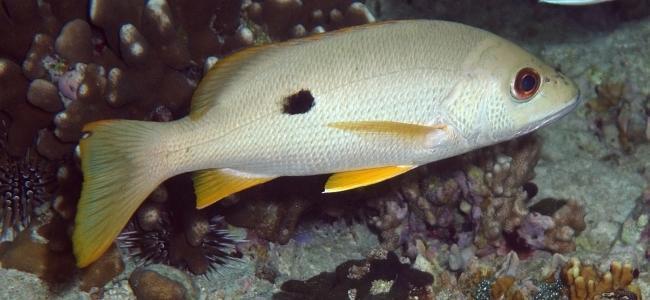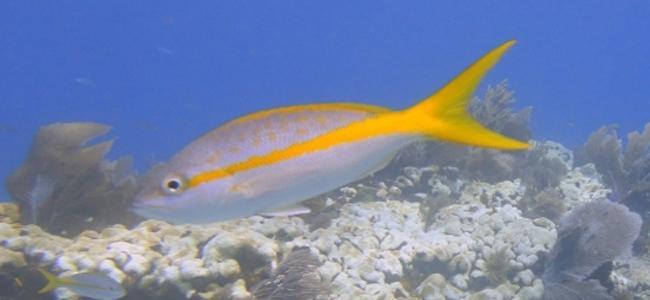The snapper family (Lutjanidae) comprises mostly marine species, although 3 species (Lutjanus fuscescens, Lutjanus goldiei and Lutjanus maxweberi) have been described as inhabiting freshwater and/or estuaries. Juveniles of several species are capable of entering brackish estuaries and fresh waters on a temporary basis. They are distributed throughout tropical and subtropical waters of the Atlantic, Indian and Pacific Oceans, generally found near the seafloor from shallow waters to depths of 550 meters.
In terms of size, the record length among snappers is held by Lutjanus cyanopterus, with a maximum recorded length of 160 cm and an imposing weight of almost 60 kg. They have a terminal mouth with a moderate to large size. The mouth has a multitude of large canine teeth in its jaws.
The dorsal fin of snappers is continuous, may be slightly serrated, and has 9-12 spines followed by 9-18 soft rays. The anal fin consists of 3 spines followed by 7-11 soft rays. The pelvic fins are usually inserted in a plane just behind the base of the pectoral fins. Finally, the caudal fin of this fish family usually has a slightly forked in shape.
Snapper species are often confused with species belonging to the grunts family (Haemulidae), although the distinguishing feature between the two families is the presence of large canines in the mouth of snappers and their absence in grunts.
Snappers are fish species of great importance as food for humans and of great recreational interest for sport fishing. There have been cases of ciguatera, a poisoning disease characteristic of some tropical fish species. This disease is due to toxins caused by certain dinoflagellates that are ingested by the fish along with their normal diet. Snappers are predatory species, feeding mainly on crustaceans and fish, although there are certain species that feed on algae and some species are even planktivorous (Ocyurus genera).
At present, a total of 110 species of snappers have been described, all grouped into 4 subfamilies (Etelinae, Apsilinae, Paradicichyhyinae, Lutjaninae) and 17 genera.



